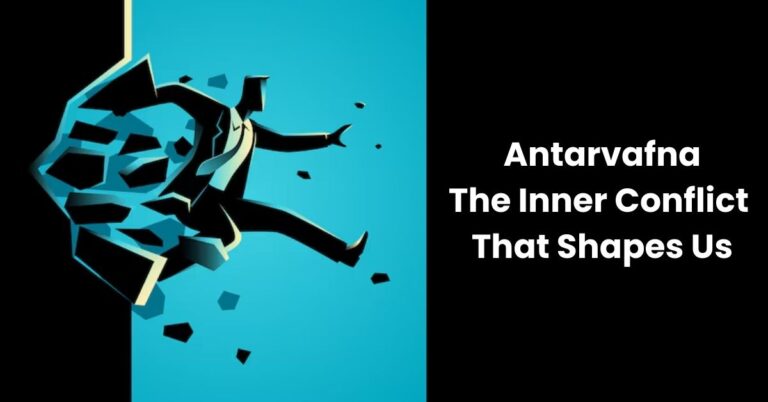Let’s talk about something you already have — something quietly powerful, often overlooked, and surprisingly transformative. It’s called Antarvafna. Never heard of it? That’s okay — you’re about to discover a whole new way of understanding yourself, your decisions, and your life.
What Does “Antarvafna” Really Mean?
Origins of the Word
“Antarvafna” is a Sanskrit-rooted term that roughly translates to “inner voice” or “inner calling.” It blends antar (inner) with vafna (conscience or stirring), meaning that gentle tug within that whispers rather than shouts.
A Cultural Interpretation
In Indian philosophy and spiritual traditions, antarvafna is more than just a gut feeling. It’s your soul’s compass, guiding you toward what aligns with your true nature. Whether you’re spiritual, secular, or somewhere in between, this concept is universally relevant.
Why Antarvafna Matters in Today’s World
Internal Voice vs. External Noise
Think about your day — how much of it is shaped by others? Social media. News. Peer pressure. Algorithms that know what you want before you do. In this chaos, your inner voice can get drowned out. Antarvafna cuts through the noise like a lighthouse in fog.
Navigating Chaos Through Antarvafna
When the world throws curveballs — layoffs, heartbreaks, major decisions — it’s not Google that has the answer. It’s that quiet whisper inside you, telling you what feels right, even if it’s not the easiest path.
Awakening Your Antarvafna
Self-Awareness: The First Step
You can’t use a compass if you’re spinning in circles. Start with stillness. Take five minutes a day to just be. No phone. No tasks. Just awareness. It’s awkward at first but magical later.
Tuning Into Your Gut Instinct
Intuition isn’t a superpower — it’s a muscle. You train it. You listen when it nudges you, even if you can’t explain why. And over time, its voice grows clearer.
Meditation Techniques
- Try mindfulness meditation: focus on your breath and observe your thoughts.
- Practice body scan meditations to tune into physical cues linked to emotions.
Journaling as a Tool for Discovery
Ask yourself in writing: What do I really want? Why did that situation bother me? Often, your pen reveals your more than your mind can.
Antarvafna and Emotional Intelligence
Understanding Emotional Triggers
Your antarvafna is closely tied to your emotions. When something triggers you, it’s often a signpost — not a stop sign. Ask yourself, “Why did that annoy me?” and let your explain.
Making Thoughtful Decisions
Ever made a choice that “looked good on paper” but felt wrong? Yeah, we all have. Your antarvafna helps balance logic with emotion, leading to decisions that feel right and stick.
Antarvafna in Relationships
Listening Beyond Words
In relationships, antarvafna lets you hear what’s not being said. It helps you pick up on energy, on tension, on unsaid truths — making you a better partner and friend.
Responding Instead of Reacting
When a fight brews, your is the part of you that says, “Take a breath.” It helps you choose a thoughtful response over a fiery reaction.
Antarvafna at Work: Your Inner Guide
Better Leadership Through Inner Clarity
Great leaders don’t just follow trends. They follow their gut, their values — their antarvafna. It’s the difference between managing and inspiring.
Solving Problems with Inner Wisdom
Whether you’re an entrepreneur or a student, challenges pop up daily. Antarvafna helps you approach problems with insight, not just textbook answers.
Myths Around Antarvafna
Is It Just Intuition?
Not exactly. Intuition is often spontaneous. Antarvafna is more contemplative. It’s not a flash, it’s a slow, grounded inner knowing.
Can Everyone Access It?
Yes! You don’t need to be a monk or meditate for hours. Your antarvafna is always with you — you just need to turn the volume up on it.
Cultivating Antarvafna Daily
Morning Rituals to Connect
- Start your day with silence — even five minutes.
- Ask: What do I need today?
- Set an intention rather than a to-do list.
Cutting Out Distractions
Your antarvafna thrives on mental clarity. So:
- Take phone-free walks.
- Reduce digital clutter.
- Choose content that uplifts over content that drains.
Real-Life Examples of Antarvafna in Action
Stories of Famous Thinkers
- Steve Jobs often spoke about trusting intuition and making bold choices.
- Mahatma Gandhi followed his antarvafna even when it meant going against the majority.
Everyday People, Everyday Insight
- A nurse switching careers after a dream that “felt right.”
- A mom starting a business after ignoring logic but trusting her inner push.
These aren’t miracles — they’re real-world antarvafna moments.
Final Thoughts: A Quiet Superpower
Antarvafna isn’t flashy. It won’t scream for your attention. But it’s there — subtle, patient, wise. In a world obsessed with noise, this quiet force is your edge. So the next time you feel a little nudge, a whisper, a knowing… listen. That’s your antarvafna speaking.
FAQs About Antarvafna
1. Can antarvafna be wrong?
Sometimes, what we think is antarvafna might be fear or bias. The key is reflection — if the feeling persists in calm moments, it’s likely authentic.
2. How do I differentiate antarvafna from overthinking?
Antarvafna is quiet and calm. Overthinking is loud and anxious. Learn to feel the difference through stillness and self-awareness.
3. Is antarvafna related to spirituality?
It can be, but it doesn’t have to be. Whether you see it as a divine guide or inner clarity, it’s relevant to everyone.
4. How can I teach my kids to use antarvafna?
Encourage self-reflection, emotional literacy, and decisions based on feelings — not just rules. Kids are naturally intuitive.
5. What if my antarvafna leads me to an unpopular choice?
That’s the beauty of it. Antarvafna often leads to authenticity, not approval. Trust that your inner truth knows what’s best.

